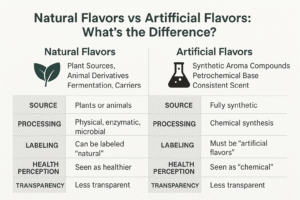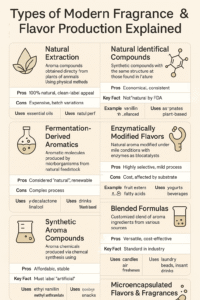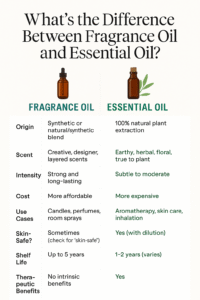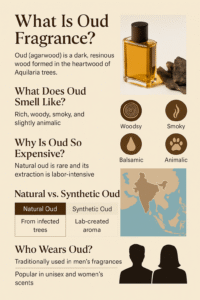The Ultimate Guide to Mastering Beverage Flavors: Elevating Your Drinking Experience
Introduction
The Importance of Flavor in Beverages: An Overview
Flavor is at the heart of our drinking experience. It transforms ordinary drinks into memorable moments, enhancing our enjoyment and satisfaction. Beverages, whether non-alcoholic or alcoholic, rely heavily on a combination of flavors that can evoke emotions, memories, and cultural connections. Understanding how to craft and manipulate these flavors can lead to a more enjoyable and nuanced drinking experience, whether at home or in a bar.
Understanding the Basics: Differentiating Between Taste and Flavor
While often used interchangeably, taste and flavor refer to different aspects of our sensory experience. Taste is limited to the five basic sensations: sweet, sour, salty, bitter, and umami. Flavor, on the other hand, encompasses taste along with aroma and other sensory experiences. Our perception of flavor is significantly influenced by our sense of smell, which can identify thousands of aromas, enhancing our overall drinking experience.
The Science of Flavor
How We Perceive Flavors: The Role of Taste and Smell
Flavor perception begins with our taste buds, which send signals to the brain when they come in contact with substances. However, much of what we identify as flavor actually comes from olfactory receptors in our nose. This is why food and drink can seem tasteless when we have a cold—our ability to smell is impaired, and thus, our flavor perception diminishes.
The Art of Flavoring Beverages: A Scientific Perspective
Creating a well-balanced beverage involves an artful blend of ingredients that can complement or contrast with each other. The interplay between sweetness, acidity, bitterness, and aroma is crucial. For example, the sweetness of a fruit puree can balance the tartness of citrus, while herbs can add complexity. Understanding the science behind these interactions helps in crafting beverages that delight the palate.
Flavor Compounds and Their Characteristics
Flavor compounds, both natural and synthetic, are responsible for the diverse array of flavors found in beverages. Terpenes, esters, and aldehydes, for instance, are common in fruit flavors, imparting their characteristic aromas and tastes. Each compound brings unique qualities; for example, limonene contributes citrusy notes, while linalool adds floral hints. Knowledge of these compounds allows beverage creators to enhance or modify flavors effectively.
Essential Ingredients for Beverage Flavoring
Fruit Flavors: The Backbone of Refreshing Drinks
Fruits are the cornerstone of flavoring beverages, providing natural sweetness and acidity. Popular fruit flavors include citrus (lemons, limes, oranges), berries (strawberries, blueberries), and tropical fruits (mangoes, pineapples). Each fruit has its unique profile that can be used to create refreshing drinks, whether in juices, sodas, or cocktails.
Herbs and Spices: Adding Sophistication and Complexity
Herbs and spices can elevate the complexity of a beverage. Basil, mint, and rosemary introduce fresh, aromatic notes, while spices like cinnamon and cardamom can add warmth and depth. These ingredients can create signature flavors that set beverages apart, appealing to sophisticated palates seeking something beyond traditional fruit flavors.
Syrups and Extracts: Sweetness with Depth
Syrups and extracts serve as excellent flavoring agents, adding sweetness while enhancing complexity. Simple syrups infused with herbs or spices can provide unique flavor profiles, while extracts like vanilla or almond offer concentrated flavor without additional liquid. These components are essential in cocktail crafting and can also be used in non-alcoholic beverages to achieve desired sweetness and flavor.
Crafting Your Drink Palette
Non-Alcoholic Beverages: Creating Layers of Flavor
Creating non-alcoholic beverages with layered flavors involves careful balance and creativity. Combining various elements like fruit juices, herbal infusions, and flavored syrups can yield refreshing drinks that appeal to diverse tastes. For example, a mocktail might blend fresh lime juice, mint syrup, and soda water, creating a drink that is both complex and refreshing.
Alcoholic Mixes: The Basics of Cocktail Flavors
Cocktails offer endless possibilities for flavor exploration. The foundation of many cocktails is based on spirits like vodka, gin, rum, and whiskey, each bringing distinct flavor profiles. Mixers, such as tonic water, sodas, and juices, can either enhance or contrast the base spirit, while garnishes add an extra layer of aroma and visual appeal. Mastering the balance between these elements is key to crafting signature cocktails.
Innovative Combinations: Fusion Flavors in Modern Mixology
Modern mixology often embraces fusion flavors, merging ingredients from various culinary traditions. Think of spicy jalapeño-infused margaritas or herbal gin and tonics featuring rosemary or lavender. These innovative combinations can surprise the palate and create memorable drinking experiences, appealing to adventurous consumers looking for something unique.
Techniques in Beverage Flavor Development
Infusion Methods: Unlocking the Essence
Infusion techniques allow for the extraction of flavors from ingredients into beverages. Common methods include steeping herbs in hot water or soaking fruits in alcohol or syrup. Cold infusion is also gaining popularity, particularly for teas and cocktails, allowing flavors to develop slowly without heat. Mastering infusion techniques enables beverage creators to unlock the full potential of their ingredients.
Aging and Fermentation: Flavor Development Over Time
Aging and fermentation can dramatically alter the flavor profile of beverages. Wines, for example, develop complexity and depth through aging in barrels, while fermented drinks like kombucha or sour beers develop distinctive flavors from the fermentation process. Understanding how time and fermentation affect flavor can help creators produce unique and desirable beverages.
Carbonation: The Fizz Factor in Flavor Enhancement
Carbonation adds a refreshing element to beverages, enhancing their mouthfeel and flavor perception. The bubbles in carbonated drinks can carry aroma compounds, making flavors more pronounced. Whether in sparkling water, sodas, or cocktails, carbonation can transform the drinking experience, providing a sense of liveliness and refreshment.
Industry Insights
Trendsetting Flavors in the Beverage Industry
The beverage industry is continuously evolving, with new flavors and trends emerging regularly. Current trendsetting flavors include tropical fruits, floral notes, and spiced beverages. Sustainability and health-conscious choices are also influencing flavor development, leading to an increased interest in natural and organic ingredients.
Case Studies: Successful Beverage Flavor Launches
Examining successful flavor launches can provide valuable insights. For instance, the rise of spiced rums in recent years has opened new avenues for tropical cocktails and flavor exploration. Similarly, the popularity of botanical spirits has inspired a surge in floral and herbal flavor combinations, showcasing how market trends can shape beverage offerings.
Consumer Preferences and Market Analysis
Understanding consumer preferences is vital for successful flavor development. Market analysis reveals that consumers are increasingly seeking unique, authentic flavors, particularly those with a connection to health and wellness. Beverages that emphasize natural ingredients and innovative flavor combinations are more likely to resonate with today’s discerning consumers.
Working with Natural vs. Artificial Flavors
Benefits and Drawbacks of Natural Flavorings
Natural flavorings are derived from real ingredients, providing authentic taste experiences. They often appeal to health-conscious consumers looking for clean labels. However, natural flavors can be more expensive and may vary in consistency. The sourcing of these ingredients can also impact flavor availability.
Understanding the Role of Artificial Flavors
Artificial flavors can be a cost-effective way to replicate desired tastes. They offer consistency and can be produced at scale, making them attractive for mass-market products. However, they can sometimes lack the complexity of natural flavors and may not appeal to consumers seeking authenticity and transparency.
Flavor Preservation and Stability
Challenges in Maintaining Flavor Integrity
Maintaining flavor integrity is a significant challenge in the beverage industry. Factors such as light exposure, temperature fluctuations, and oxidation can lead to flavor degradation. Beverage producers must employ strategies to protect flavors throughout the production and distribution process.
Packaging Solutions to Preserve Flavors
Innovative packaging solutions, such as vacuum sealing and UV-protective containers, help preserve flavor integrity. Additionally, using inert gases in packaging can reduce oxidation, extending the shelf life of flavored beverages. Companies that prioritize packaging will enhance consumer satisfaction by delivering fresh, flavorful products.
Special Sections
Seasonal Flavors Guide: Matching Flavors with Seasons
Seasonal flavors play a crucial role in beverage development. Summer calls for refreshing citrus and berry flavors, while fall often embraces warm spices like cinnamon and nutmeg. Understanding seasonal trends can help beverage creators align their products with consumer preferences, maximizing sales opportunities throughout the year.
Cultural Flavor Traditions: Exploring Regional Beverages
Exploring regional beverage traditions reveals a wealth of unique flavors and cultural connections. For example, chai in India combines spices like cardamom and ginger, while South American tereré features yerba mate infused with herbs. Embracing these cultural flavors can enrich beverage offerings and create authentic experiences for consumers.
The Future of Beverage Flavors: Emerging Trends
The future of beverage flavors is bright, with emerging trends such as functional beverages that combine flavor with health benefits, including probiotics and adaptogens. Sustainability will continue to be a driving force, with consumers demanding transparency and eco-friendly sourcing. Keeping an eye on these trends will be essential for staying ahead in the competitive beverage landscape.
Beverage Pairing
Complementary Flavors: Pairing Food and Beverages
Pairing beverages with food enhances the overall dining experience. Complementary flavors can create harmony; for instance, a citrusy cocktail can brighten a rich dish, while a robust red wine can stand up to hearty meats. Understanding flavor profiles helps in crafting the perfect pairings that elevate both the food and beverage.
Beverage Pairing for Special Occasions
Certain occasions call for specific beverage pairings. For example, refreshing cocktails are ideal for summer barbecues, while warm spiced drinks can enhance holiday gatherings. Thoughtfully curated beverage pairings can elevate special moments and leave lasting impressions.
DIY Flavor Experimentation
Home-based Flavor Creation: Tips and Tricks
Creating unique flavors at
home can be both fun and rewarding. Experimenting with various herbs, spices, and fruits allows individuals to craft personalized beverages that suit their tastes. Simple techniques like infusion or syrup-making can be easily mastered with practice, leading to delicious results.
From Kitchen to Market: Turning a Flavor Idea into a Product
Many successful beverage entrepreneurs start with a flavor idea born in their kitchens. Understanding market needs, conducting taste tests, and perfecting recipes are critical steps in bringing a product to market. With the rise of e-commerce, small brands can reach consumers directly, transforming homemade flavors into commercial successes.
Health and Nutrition
Caloric Content and Flavoring: Finding the Balance
When developing flavored beverages, it’s essential to consider caloric content. Striking a balance between flavor and health can attract a broader consumer base. Many brands are now formulating low-calorie options, utilizing natural sweeteners to maintain flavor without the extra calories.
Natural Sweeteners: Healthy Alternatives for Beverage Sweetening
The demand for healthier sweetening options is rising. Natural sweeteners like agave, honey, and stevia provide alternatives to refined sugars, offering flavor without the caloric burden. Incorporating these sweeteners can enhance the health appeal of beverages, attracting health-conscious consumers.
Regulatory and Safety Considerations
Ensuring Compliance in Beverage Flavoring
Compliance with regulations is crucial in the beverage industry. Safety standards regarding ingredients, labeling, and health claims must be met to ensure consumer safety and product integrity. Beverage producers must stay informed about changing regulations to avoid penalties and ensure successful product launches.
Safety Practices in Flavor Manufacturing
Implementing safety practices in flavor manufacturing is vital to maintain product quality. Regular audits, quality control checks, and proper sanitation protocols are essential for ensuring the safety and integrity of flavored beverages. Adhering to these practices fosters consumer trust and brand loyalty.
Sustainability and Ethical Sourcing
Eco-friendly Practices in Flavor Extraction
Sustainable practices in flavor extraction, such as water conservation and reduced energy consumption, are becoming increasingly important. Producers are exploring methods like cold extraction, which uses less energy and preserves flavor integrity. Consumers are now more inclined to support brands that prioritize sustainability in their sourcing practices.
The Impact of Sourcing on Flavor and Environment
Ethical sourcing of ingredients not only impacts flavor but also has significant environmental implications. Brands that commit to sustainable farming practices can enhance the quality of their flavors while contributing positively to local communities and ecosystems. This holistic approach resonates with consumers seeking ethical and environmentally friendly products.
Technology in Flavor Development
Innovations in Flavor Analysis and Creation
Technological advancements are transforming flavor development. Innovations in analytical chemistry allow for precise identification of flavor compounds, enabling brands to replicate desired tastes more accurately. Additionally, flavor creation software helps in formulating and testing new combinations efficiently.
The Role of Data Analytics in Predicting Flavor Trends
Data analytics is playing a significant role in understanding consumer preferences and predicting flavor trends. By analyzing purchasing data, social media trends, and customer feedback, brands can tailor their product offerings to meet evolving demands, ensuring they remain competitive in a rapidly changing market.
Conclusion
The Future of Beverage Flavoring: Where We Are Heading
The future of beverage flavoring is poised for exciting developments, driven by consumer demand for innovative and sustainable options. As the market evolves, flavor creators will need to stay ahead of trends, embracing new ingredients and technologies while maintaining a commitment to quality and authenticity.
Summary of Key Takeaways
Mastering beverage flavors involves understanding the science behind flavor perception, utilizing essential ingredients, and employing innovative techniques. By embracing trends, sustainability, and technology, beverage creators can elevate their offerings and meet the diverse preferences of today’s consumers.
FAQs
What Makes a Flavor Appealing in Beverages?
Appealing flavors often combine sweetness, acidity, and aroma, creating a balanced and enjoyable drinking experience. Unique and authentic ingredients also play a crucial role.
How Do You Test Beverage Flavors for Market Viability?
Testing can involve focus groups, consumer tastings, and surveys to gather feedback on flavor preferences, sweetness levels, and overall enjoyment.
Can You Create a Successful Beverage Flavor at Home?
Yes! With experimentation and creativity, you can develop unique flavors using simple techniques like infusion and syrup-making in your kitchen.
What Are the Most Popular Beverage Flavors Worldwide?
Popular flavors include citrus, berry, vanilla, and various spices. Regional preferences may vary, with tropical flavors gaining traction in specific markets.
How Are Sustainable Practices Impacting Beverage Flavor Development?
Sustainable practices are leading to greater transparency in sourcing, enhanced flavor quality, and increased consumer trust in brands that prioritize environmental and ethical considerations.




